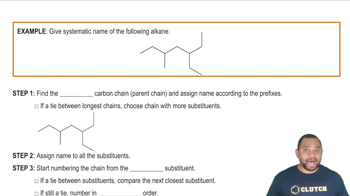Cinnamaldehyde, the pleasant-smelling substance found in cinnamon oil, has the following structure:
What products would you expect to obtain from reaction of cinnamaldehyde with water and sulfuric acid catalyst?
 Verified step by step guidance
Verified step by step guidance Verified video answer for a similar problem:
Verified video answer for a similar problem:


 1:13m
1:13mMaster Benzene Reactions Concept 1 with a bite sized video explanation from Jules
Start learning